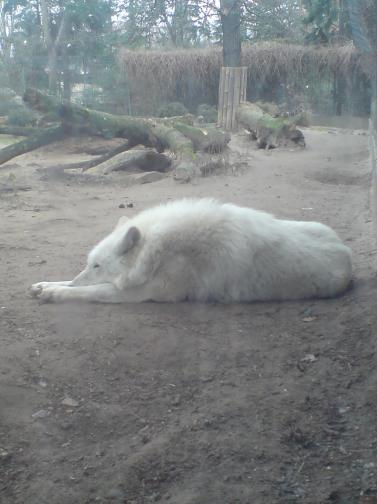The Christian Wolves of Ossory July 18, 2012
Author: Beach Combing | in : Medieval , trackbackWe all know that medieval chroniclers and sensationalists love wonder stories. Beach has a private rule that even if a medieval tale takes place with a ‘reliable’ witness in living memory, then he still looks the other way. But the following story clearly ‘happened’ (though there may be a way to reread it) in that there were real life consequences from it. Indeed, our author, Gerald of Wales finishes his description with this consideration.
Almost two years later [after the events of the tale] I happened to be passing through Meath where the bishop of that region had called a synod. He had also summoned the neighbouring bishops and abbots so that, advised by their counsel, he might more clearly see what he should do in the matter recounted and which he had learned on the confession of the priest.
The local church had been thrown into absolute crisis by the story that had, by this time, leaked out. Gerald had already heard of the tale, he went on to miss the council but he tells us that a letter was sent to Rome about ‘the wolves’:
About three years before the coming of Lord John into Ireland, it happened that a priest, journeying from Ulster towards Meath, spent the night in a wood on the borders of Meath. He was staying up beside a fire which he had prepared for himself under the leafy branches of a tree, and had for company only a little boy, when a wolf came up to them and immediately broke into these words: ‘Do not be afraid! Do not fear! Do not worry! There is nothing to fear!’ They were completely astounded and in great consternation. The wolf then said some things about God that seemed reasonable. They were completely astounded and in great consternation. The wolf said to them something about God that seemed reasonable. The priest called on him and abjured him by the omnipotent God and faith in the Trinity not to harm them and tell them what kind of creature he was, who, although in the form of a beast, could speak human words. The wolf gave a Catholic answer in all things and at length added: ‘We are natives of Ossory. From there every seven years, because of the imprecation of a certain saint, namely the abbot Natalis, two persons are compelled to go into exile not only from their territory but also from their bodily shape. They put off the form of man completely and put on the form of wolf. When the seven years are up, and if they have survived, two others take their place in the same way, and the first pair must return to their former country and nature. ‘My companion in this pilgrimage is not far from here and is seriously ill. Please give her in her last hour the solace of the priesthood in bringing to her the revelation of the divine mercy.’ This is what he said, and the priest, full of fear, followed him to a certain tree not far away. In the hollow of the tree the priest saw a she-wolf groaning and grieving like a human being, even though her appearance was that of a beast. As soon as she saw him she welcomed him in a human way, and then gave thanks also to God that in her last hour he had granted such consolation. She then received from the hands of the priest all last rites duly performed up to the last communion. This too she eagerly requested, and implored him to complete his good act by giving her the viaticum … To remove all doubt [the he-wolf] pulled all the skin off the she-wolf from the head down to the navel, folding it back with his paw as if were a hand. And immediately the shape of an old woman, clear to be seen, appeared. At that, the priest, more through terror than reason, communicated her as she had earnestly demanded, and then she devoutly received the sacrament. Afterwards, the skin that had been removed by the he-wolf resumed its former position. When all this had taken place – more in equity than with proper procedure – the wolf showed himself to them to be a man rather than a beast. He shared the fire with them during the whole of the night, and when morning came he led them over a great distance of the wood, and showed them the surest way on their journey. When they parted he gave many thanks to the priest for the benefit he had conferred upon him, and promised to give him much more tangible evidence of his gratitude, if the Lord should call him back from the exile in which he was, and of which had now completed two thirds.
And the explanation. Perhaps these were Fenians who were known as ‘the wolves’? Perhaps a local tribe had a wolf totem? Certainly there is an interesting passage in the Leabhar Breatnach. Make of it what you will.
The (human) descendants of [a mythical] wolf are in Ossory. They have a wonderful property. they transform themselves into wolves, and go forth in the form of wolves, and if they happen to be killed with flesh in their mouths, it is in the same condition that the body out of which they came will be found; and they command their families not to remove their bodies, because if they are moved they could never come into them again.
So the body remains safe at home while the ‘astral’ (?) wolf goes out to hunt?
Any other medieval werewolf stories? drbeachcombing AT yahoo DOT com



